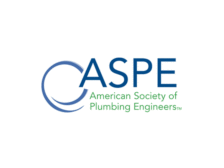Home » Keywords: » legionella prevention
Items Tagged with 'legionella prevention'
ARTICLES
PM Video Podcast
Discussing prevention and mitigation strategies with Special Pathogens Laboratory’s Dr. Janet Stout.
Read More
James Dipping: Non-chemical water treatment options for Legionella control
Specialty components to further reduce the risk of Legionella — part two.
March 6, 2023
James Dipping: Chemical and non-chemical additives for Legionella control
Specialty components to further reduce the risk of Legionella.
January 6, 2023
James Dipping: The facts about Legionella, and why we should care
Cases of Legionnaires’ disease are rising significantly.
July 7, 2022
Best practices for Legionella mitigation
Rising Legionella outbreaks underlay the need for better plumbing design, mitigation efforts.
May 16, 2022
Considerations for designing plumbing systems in health care facilities
Legionella and scald prevention top plumbing trends in health care settings.
September 16, 2021
IAPMO UMC: Working toward addressing Legionella in mechanical systems
The Legionella Task Group will provide recommendations to the UMC Technical Committee for consideration to the 2024 edition of the UMC.
July 16, 2021
Get our new eMagazine delivered to your inbox every month.
Stay in the know on the latest plumbing, piping, hydronic and fire protection trends.
SUBSCRIBE TODAYCopyright ©2024. All Rights Reserved BNP Media.
Design, CMS, Hosting & Web Development :: ePublishing











